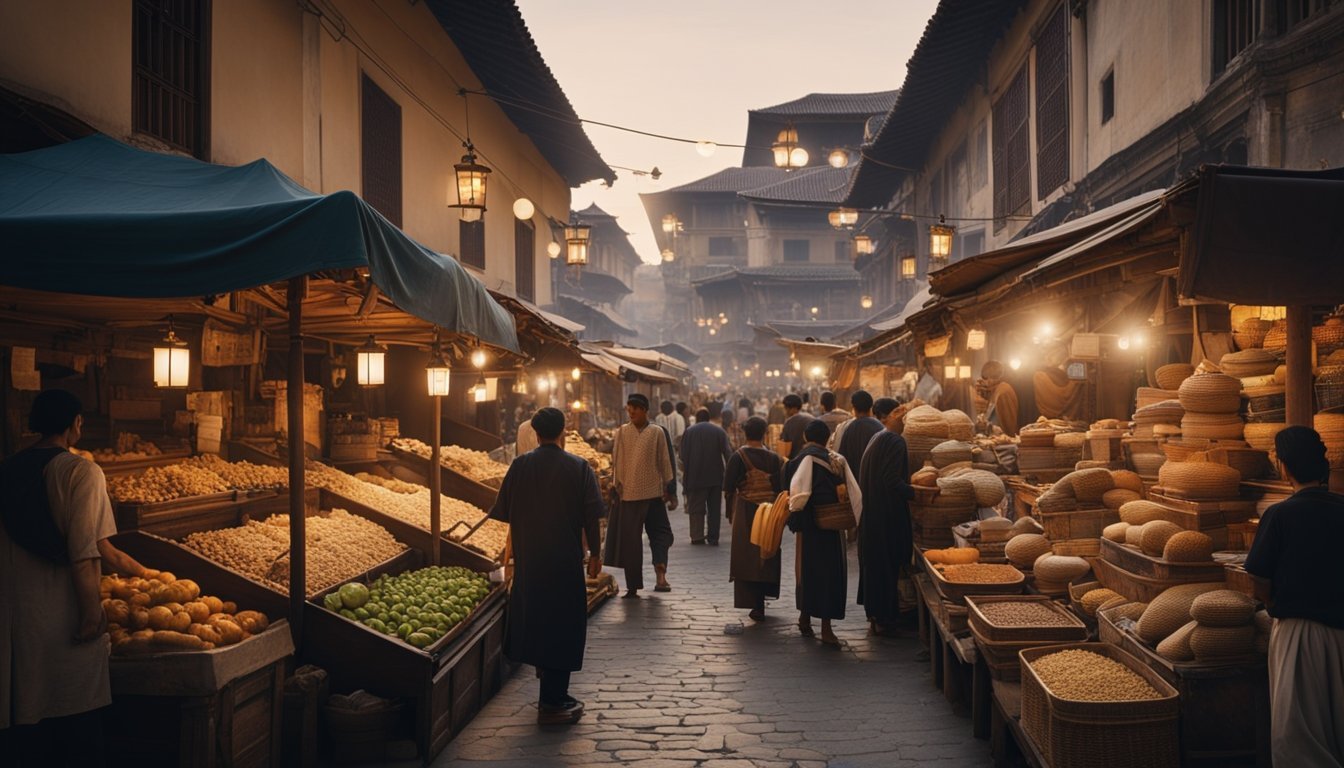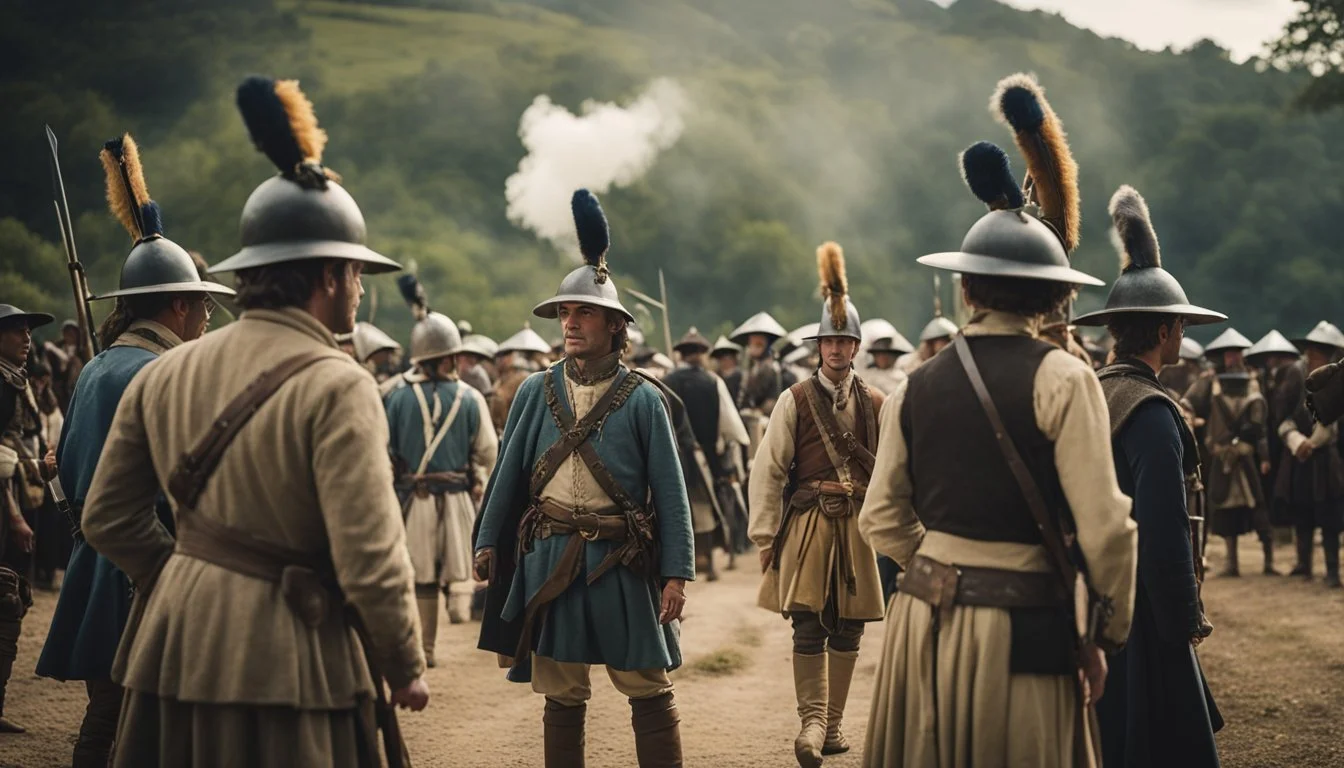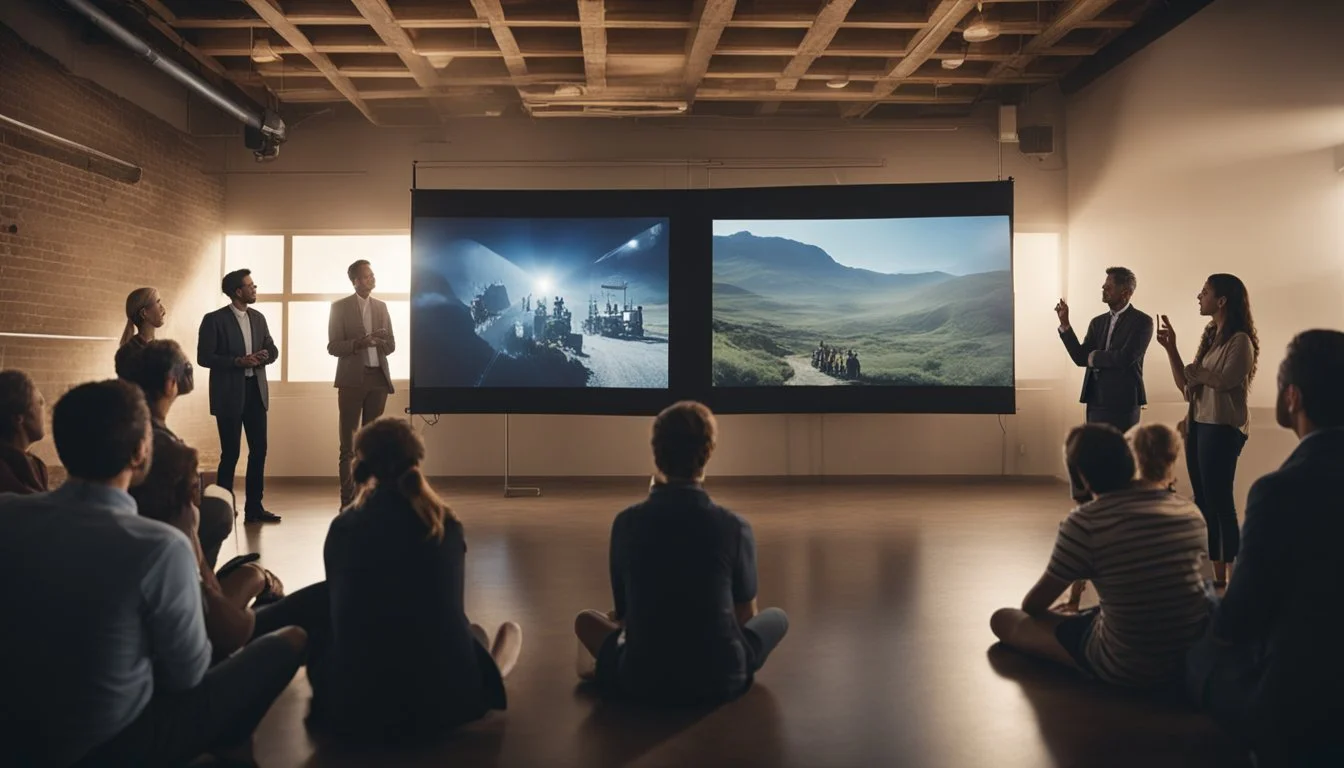The Art of the Historical Documentary
Reviving History Through Film
Documentaries possess a unique power to transport audiences across time, offering a vivid experience of historical events and eras. Through meticulous research and storytelling, filmmakers recreate the past, making history accessible and engaging. By presenting history through a cinematic lens, documentaries provide a nuanced and immersive understanding of events that shaped the present.
Historical documentaries go beyond mere facts and dates, exploring the personal stories and societal impacts of significant moments. Whether it’s the harrowing experiences captured in Holocaust films or the inspiring tales of civil rights activists, these films humanize history, creating emotional connections with viewers. This emotional engagement not only educates but also prompts reflection and discussion.
The artistry in historical documentaries lies in their ability to blend accuracy with compelling narratives. Utilizing archival footage, expert interviews, and recreations, filmmakers craft stories that resonate on multiple levels. This blend of creative storytelling and factual integrity ensures that documentaries serve as both educational tools and captivating visual experiences.
Historical Documentary Defined
Historical documentaries offer a unique lens through which viewers can engage with significant past events. Combining factual accuracy with engaging storytelling, these films create a vivid portrayal of history.
Evolution and Role
Historical documentaries began to take shape in the early 20th century, evolving from simple newsreels into complex narratives. Early pioneers like Dziga Vertov established foundational techniques in Russia during the 1920s. These films serve dual purposes: educating viewers and preserving historical records.
Through interviews, archival footage, and reenactments, historical documentaries bring events to life. They encourage viewers to engage critically with how history is depicted. Filmmakers use narrative structures to convey not just facts but also the emotional weight of historical events.
Genres and Styles
Different genres within historical documentaries include biographical, military, political, and social history films. Each genre focuses on specific aspects of history, from personal stories to broader societal changes.
Styles vary from cinéma vérité, which emphasizes naturalism, to dramatized reenactments that add a theatrical element. Modern documentaries often blend multiple styles for greater impact. The goal is to create an immersive experience that is both informative and compelling.
By exploring a variety of narrative techniques, historical documentaries remain a dynamic and evolving form of storytelling.
Researching for Historical Accuracy
Creating a historical documentary demands meticulous research to ensure authenticity. The filmmaker must balance between exploring primary and secondary sources and overcoming challenges of verification.
Primary vs. Secondary Sources
Primary sources are original documents or physical objects from the time being studied. These include letters, photographs, diaries, and official records. Utilizing primary sources ensures a direct connection to historical events. They offer firsthand accounts and tangible evidence of the past.
Secondary sources, on the other hand, interpret, analyze, or summarize primary sources. Examples include textbooks, articles, and documentaries. While secondary sources provide context and scholarly analysis, they may introduce bias.
Balancing both types of sources enriches the documentary. The filmmaker uses primary sources to ground the narrative in authenticity and secondary sources to offer perspective.
Challenges of Verification
Verifying historical facts poses significant challenges. Primary sources may be incomplete or damaged, leading to gaps in information. Secondary sources can vary in reliability, with some interpretations being biased or inaccurate.
A key challenge is corroborating information from multiple sources. This involves cross-referencing data and consulting experts. The filmmaker must be critical of sources, evaluating their credibility and context.
Another hurdle is the potential for anachronisms. Accurate historical portrayal requires attention to detail in language, attire, and settings. This meticulous verification process is crucial for maintaining the documentary's integrity.
Consistency and diligence in verification help in constructing a credible and compelling historical documentary.
Scripting and Storytelling
Creating a compelling historical documentary requires a careful blend of structured narratives and engaging storytelling. These elements help ensure historical accuracy while captivating the audience.
Structuring a Historical Narrative
Historical documentaries benefit from a clear, well-organized narrative structure. This involves establishing a chronological order of events and maintaining a logical flow. The narrative should begin by setting the context—providing background details that frame the story.
Incorporating key figures and events at strategic points helps to highlight important moments. Utilizing interviews and archival footage enhances the narrative by adding depth and authenticity. Each segment of the documentary should build on the previous one, creating a cohesive story that engages the viewer.
The climax and resolution are vital components, where the most critical events unfold and the story concludes. Reenactments can be used to vividly portray significant moments, bringing history to life in a dynamic way.
Balancing Facts and Engagement
Balancing historical facts with engaging storytelling is crucial. It is essential to ensure accuracy while maintaining the audience's interest. Narration and graphics can be employed to highlight key facts without overwhelming the viewer.
The integration of personal anecdotes and eyewitness testimony adds a human element, making the history more relatable. Using music and sound effects can invoke emotions and set the tone.
The script should be fact-checked and cross-referenced with credible sources. Blending visual storytelling with informative commentary creates an immersive experience, ensuring the documentary is both educational and captivating.
By focusing on these elements, filmmakers can produce historical documentaries that not only inform but also resonate deeply with viewers.
Visualizing History
Visualizing history in documentaries involves using various techniques to create a vivid and engaging representation of the past. These techniques include reenactments, archival footage, and the incorporation of still images and artifacts.
Reenactments and Dramatizations
Reenactments and dramatizations are instrumental in bringing historical events to life. They involve actors recreating historical scenarios, often with period costumes, settings, and props. This method helps viewers visualize events and emotions that textual descriptions alone cannot convey.
Dramatizations also add a layer of emotional depth, making historical figures appear more relatable. The authenticity of the portrayal is crucial, and filmmakers often collaborate with historians to ensure accuracy in the depiction of events and personalities.
Use of Archival Footage
Archival footage is another essential tool in historical documentaries. It includes original video and audio recordings from the period being depicted. This footage provides authentic visual and auditory context, grounding the narrative in reality.
Viewers can see actual people, locations, and events as they occurred, offering an unfiltered glimpse into the past. This type of content is often sourced from national archives, newsreels, and private collections, adding a layer of credibility and depth to the documentary.
Incorporating Still Images and Artifacts
Still images and artifacts are invaluable in visualizing history. Photographs, paintings, and physical objects from the past help to construct a tangible connection to historical narratives. These items can be displayed with accompanying narration or text to provide essential context.
Artifacts, such as letters, clothing, and tools, offer a direct link to historical events and everyday life. They help viewers understand the material culture of different periods. Additionally, close-up shots and detailed descriptions enhance engagement, allowing audiences to appreciate the significance of these items fully.
Audio Elements in Historical Documentaries
Audio plays a pivotal role in historical documentaries, crafting an immersive experience by effectively blending scoring and sound design, narration and interviews, and authentic sounds with linguistic accuracy.
Scoring and Sound Design
Scoring enhances the emotional resonance of historical documentaries. Original compositions or period-appropriate music can underscore thematic elements. Sound design, involving ambient sounds and effects, can recreate the atmosphere of past events. Both scoring and sound design draw the audience deeper into the narrative, making the historical context more vivid.
Narration and Interviews
Narration provides a cohesive thread through the documentary. It can be delivered by historians, actors, or the filmmakers themselves. Interviews with experts or eyewitnesses offer multiple perspectives and in-depth insights. The balance of these elements ensures clarity and breadth in storytelling, bridging gaps in the historical record.
Authentic Sounds and Linguistic Accuracy
Using authentic sounds, such as period-specific machinery or environmental noises, adds layers of realism. Attention to linguistic accuracy, including accents and terminology of the era, fortifies the documentary’s authenticity. This meticulous attention to detail helps documentary filmmakers construct a convincing and historically accurate portrayal of events.
Directing and Producing Considerations
Directing and producing historical documentaries involve a careful balance of ethical responsibilities and practical challenges like funding.
Ethical Implications and Responsibilities
Historical documentaries carry the weight of representing real events and people accurately and respectfully. Directors must contend with various biases, including those of the filmmaker, subjects, and sponsors. Addressing these biases requires transparency and often includes presenting multiple viewpoints to avoid misrepresentation.
When handling sensitive topics, consent is essential. Filmmakers must secure permissions from interviewees and communities impacted by the documentary. Additionally, archival footage and reenactments must adhere to accuracy without dramatization that distorts facts.
Funding and Budgeting Constraints
Securing funding for historical documentaries can be challenging. Directors often rely on grants, donations, and partnerships with historical societies. Crowdfunding has also become a popular method, allowing filmmakers to connect directly with interested audiences for financial support.
Budgeting requires meticulous planning. Costs include archival footage rights, location permits, reenactment expenses, and post-production work. Allocation should prioritize authenticity, ensuring funds are used to maintain the documentary's integrity.
Flexibility in budget planning can help manage unexpected costs while keeping the project on track.
Audience Engagement and Education
Historical documentaries offer a powerful way to engage audiences by making historical events vivid and relatable, while also serving as a significant educational tool in both formal and informal settings.
Target Audience Identification
Identifying the target audience is essential for maximizing engagement. Filmmakers need to consider factors like age, educational background, and interests.
For instance, documentaries geared towards students might focus on educational content aligned with school curricula. Educators often use these films to illustrate historical events and foster critical thinking.
Demographic factors:
Age: Younger audiences may require simplified narratives.
Education Level: Content should match the audience’s comprehension abilities.
Interests: Tailoring topics to the viewer's interests can enhance engagement.
Using surveys and feedback from screenings can also help refine audience targeting.
Educational Outreach and Impact
Historical documentaries have a significant impact on education by providing a visual and emotional connection to the past.
Classrooms benefit greatly from incorporating these films into lessons. For example, interactive documentaries allow students to explore different facets of history, promoting active learning.
Key components:
Lesson Plans: Documentaries come with accompanying lesson plans to guide educators.
Discussion Guides: Facilitates meaningful conversations and deeper understanding.
Supplementary Materials: Worksheets and quizzes to reinforce learning.
Educational outreach often extends beyond traditional classrooms, reaching community centers and public libraries. This broader reach ensures that historical documentaries remain a vital resource for lifelong learning.
Educational impact is magnified through partnerships with educational institutions and organizations dedicated to public history and cultural heritage. These collaborations help tailor content to meet specific educational needs while expanding the audience base.
Platforms for Distribution
Different distribution platforms provide unique opportunities for reaching audiences. Key platforms include film festivals, theatrical releases, broadcast television, and streaming services.
Film Festivals and Theatrical Releases
Film festivals serve as premier venues for premiering historical documentaries. Notable festivals like Sundance, Toronto, and Cannes offer filmmakers opportunities to showcase their work and connect with distributors.
Theatrical releases, although more traditional, still hold value. They provide a curated experience, enhancing a film's prestige and visibility. Limited releases in arthouse cinemas can target specific demographics interested in historical documentaries.
Benefits:
Exposure to high-profile audiences and critics.
Opportunities to secure distribution deals.
Building a film's reputation and potential award considerations.
Broadcast Television and Streaming Services
Broadcast television remains a vital platform for reaching wide audiences. Channels like PBS, BBC, and History Channel frequently air historical documentaries, providing access to established viewer bases.
Streaming services like Netflix, Amazon Prime, and Chronicle offer even broader reach. They provide on-demand access across various devices, increasing viewership potential.
Benefits:
Wide and immediate global reach.
Flexible viewing options for audiences.
Potentially higher revenue through subscription models and licensing agreements.
Considerations:
Require high production quality and adherence to platform guidelines.
Competitive landscape with many documentaries vying for attention.
Accessibility:
Adding closed captions and subtitles enhances reach and compliance with accessibility standards.
Technological Advances in Filmmaking
Technological advancements have significantly influenced the art of historical documentaries by enhancing the quality of archival footage and creating immersive experiences through virtual reality.
Digital Restoration of Archival Footage
Digital restoration has transformed how audiences experience historical documentaries. Advanced software can now repair damaged or degraded film, recovering lost details and stabilizing shaky footage. Colorization is another key development, allowing black-and-white films to be seen in full color, making historical events more relatable to modern viewers.
High-resolution scanning of archival materials ensures that every frame is preserved with optimal detail, extending the lifespan of irreplaceable footage. These processes not only enhance visual quality but also improve accessibility, enabling broader dissemination through digital platforms.
Virtual Reality and Immersive Experiences
Virtual reality (VR) has introduced a new dimension to historical documentaries, allowing viewers to experience past events as if they were physically present. This technology uses 360-degree video and spatial audio to create fully immersive environments. By donning VR headsets, audiences can explore historical sites, witness re-enactments, and interact with virtual artifacts.
VR experiences can also include interactive elements, such as choosing different story paths or viewing supplemental information. These immersive experiences engage viewers more deeply, leading to a more profound understanding and connection to historical events. In addition, VR's application in education allows students to gain firsthand experiences of history, enhancing learning and retention.
Case Studies of Renowned Historical Documentaries
An Inconvenient Truth (2006)
An Inconvenient Truth directed by Davis Guggenheim, highlights climate change through the lens of former Vice President Al Gore. Personal stories, including Gore's sister’s death and his son’s near-fatal accident, add emotional depth.
Shoah (1985)
Directed by Claude Lanzmann, Shoah documents the Holocaust using interviews with survivors, perpetrators, and witnesses. It eschews archival footage, focusing purely on oral history to convey the horror of the events.
The Civil War (1990)
Ken Burns’s The Civil War brings the American Civil War to life through photographs, letters, and diaries. Narration and expert interviews intermingle, creating a powerful narrative of the conflict and its impact.
13th (2016)
Ava DuVernay's 13th explores the intersection of race, justice, and mass incarceration in the United States. The film draws connections from the abolition of slavery to modern-day prison systems, featuring interviews with scholars, activists, and politicians.
Grizzly Man (2005)
Werner Herzog directs Grizzly Man, telling the story of Timothy Treadwell, who lived among grizzly bears in Alaska. The documentary uses Treadwell's footage and Herzog's analysis to explore human-animal relationships and personal obsession.
Night and Fog (1956)
Directed by Alain Resnais, Night and Fog is one of the earliest documentaries about the Holocaust. Combining contemporary footage of concentration camps with archival images, it offers a stark reminder of the atrocities committed.
Bowling for Columbine (2002)
Michael Moore’s Bowling for Columbine examines gun violence in America, particularly the 1999 Columbine High School massacre. It uses interviews, commentaries, and confrontational techniques to address broader social issues.
Each film mentioned offers a unique approach to historical documentation, blending personal narratives, interviews, and visual storytelling to illuminate the past.
Future of Historical Documentaries
Historical documentaries are evolving with technological advancements.
Virtual reality (VR) and augmented reality (AR) are new tools that allow viewers to experience history in an immersive way. These technologies recreate historical environments, helping viewers feel as if they are "traveling" back in time.
Interactivity is becoming more prevalent. Interactive documentaries let viewers choose their path through historical events. This active participation can lead to a deeper connection with the material.
Live documentaries are another emerging trend. These include real-time elements, such as live streaming discussions or updates, which keep the audience engaged and offer contemporary perspectives on historical topics.
Digital platforms and streaming services are expanding the reach of historical documentaries. They provide a global audience access to a wide range of content, breaking down geographic barriers.
Crowdfunding is enabling more diverse voices to create historical documentaries. Platforms like Kickstarter and Patreon allow filmmakers to gather financial support directly from the public, ensuring a variety of stories are told.
Grants and prizes, such as the Library of Congress Lavine/Ken Burns Prize for Film, provide essential funding. These financial aids help documentaries with significant historical value reach completion and distribution.
In summary, the future of historical documentaries looks promising with these innovations. They ensure that history remains accessible, engaging, and relevant for future generations.










